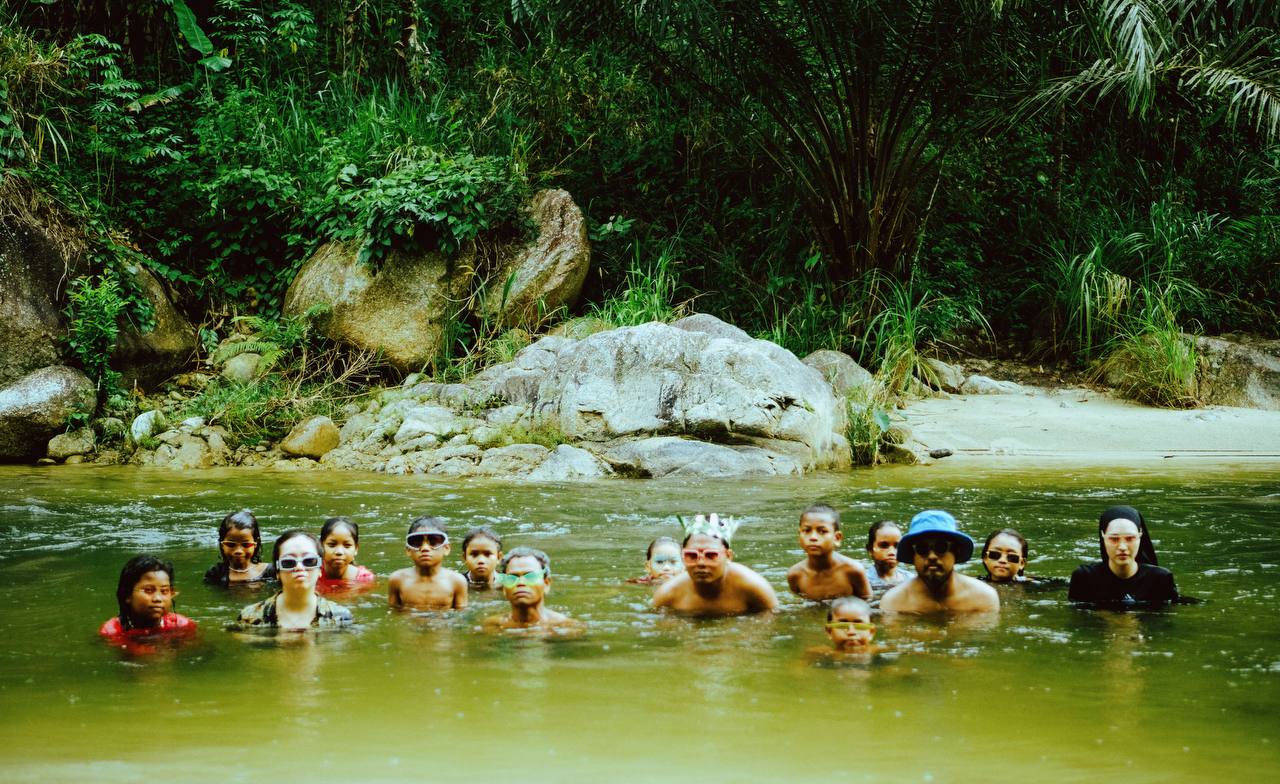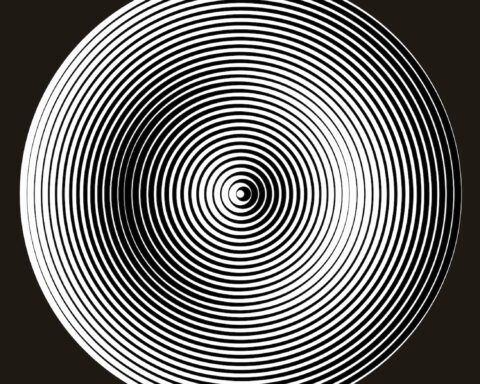Port Perak Venice, with AOC F58 Galleria Bruno Lisi presents Mestizio Dispossessed, curated by Camilla Boemio, a satellite exhibition in Rome by artists Ismael de Anda III and Eugene Ahn, this seminal program is part of Pera + Flora + Fauna: The Story of Indigenousness and the Ownership of History.
Mestizo Dispossessed is as installation utilizing digital technology, investigating notions of territorialization/ re-territorialization/ de-territorialization, which intersects imagery from the U.S./Mexico Gateway where Ismael de Anda III was raised, incorporating augmented reality features and drone video footage of de Anda’s ancestral family farm on the banks of the Rio Grande/ Rio Bravo River on the hinge of the U.S./ Mexico frontier, organized by interactive media artist Eugene Ahn.
The installation features a collection of twenty five digital collages printed on aluminum, mixing a collection of lands that de Anda and Ahn have visited and imagine.
The individual aluminum prints are hung on a grid to reveal a larger image, revealing a puzzled together image of the metallic pronged, cramped, spinning, turnstiles used at U.S/Mexico points of entry to herd/usher people across imposed boundary lines.
Mestizo Dispossessed, incorporates elements of de Anda & Ahn’s on-going project Revolutions Generator, where a re-imagined layered digital silhouette of the brutal metal turnstiles are transformed into antennae-like, satellite-esque, levitating forms, that are symbolically, forcefully yanked out of the ground, removed as barriers and released into the air as freely spinning entities. These “revolutions generators” are visible throughout the digital collage designs. Additionally, Ahn has designed an augmented reality feature where through the lens of their mobile cellular phones participants can search for rotating virtual Revolutions Generators throughout the gallery space, the gallery’s immediately surrounding areas of Roma’s Piazza del Popolo, other areas of Roma, and extending outward to wherever the viewer may travel or inhabit. The augmented reality may be available for a limited time after the end of the exhibition to signify the shifting, transitory, ephemeral, delineations of marking, territorializing, re-territorializing, de-territorializing, possessing, dispossessing features of lands and spaces.
In the center of the space will hang a flowing linear chain of small laser-printed, colored, revolutions generators forms, floating in the air. This sculpture will include two augmented reality features.
Incoming militias and forts were created to “protect” incoming settlers from Apache raids, however there are discussions stating that some indigenous groups were paid by new settlers and developing government organizations in the area to create skirmishes to dramatize the appearance of the indigenous as a threat and dangerous. De Anda’s family history is intertwined with this history. Relatives of de Anda’s Brito family lineage describe his paternal triple great-grandfather, who originally obtained the property, as of Yaqui or Apache origin whose original family name is currently unknown, being given the last name Brito by a Spanish priest. Close by the Brito farm is a re-furbished tourist ranch/ spa which features bronze sculptures memorializing ranchers and their history in the region, however omitting the history of the original indigenous peoples of the region and the part they played into the development of the “American West”. The Brito family farm, where de Anda’s mother grew up, is no longer in its use as family member have moved away but still remains in the family. Ahn’s drone footage and digital mapping of the Brito family farm serves a means of commemorating this place as a physical/ virtual document as a site of centuries of invisible inhabitations, co-mingling, clashing peoples and how the land impacted these peoples, how these peoples impacted the land, and how this land physically exists whenever it’s not intervened immediately by humans.
When the augmented reality of this desert footage is released, visitors in the gallery space can virtually overlay this desert landscape within the gallery. Another area of the hanging sculpture releases a virtual reality scene of recently ravaged areas of the Ukraine where the battle against colonization by Russia is being waged.
Ismael de Anda III born in El Paso, Texas, works and lives in Los Angeles. Using mutant practices, including digital photo-collage, drawing, painting, sculpture, installation, and interactive, site-specific projects, Ismael de Anda III’s work is inspired by his pluralistic upbringing on the U.S./Mexico Gateway and now living in Los Angeles. He has exhibited his work internationally including AOC F58 Galleria Bruno Lisi, Rome, La Estacíon Arte Contemporáneo, Chihuahua, Mexico, Supermarket 2022 Art Fair in Stockholm, and in the U.S. including the Torrance Art Museum, Lux Art Institute, and Durden and Ray. Recently de Anda has participated in several online virtual and drive-thru exhibitions. Lectures of his work include the 2020 International Textile and Apparel Conference, and as a visiting artist for CalArts and Los Angeles City College in 2021. De Anda is the recipient of a California Community Foundation Fellowship for Visual Artists. Often de Anda’s works are site-specific, inspired by the communities in which they are created, using locally sourced materials.
Eugene Ahn – lives and works in Los Angeles. Eugene Ahn explores the intersections of material and virtual by creating systems and experiences that question modes of perceiving, thinking, and being. His work is interactive, immersive, and personal, with an interdisciplinary approach that attempts to understand and critique norms from a holistic position. Leveraging logic, math, story, and myth, Ahn seeks to re-engineer the encounter with the visual, the textual, architecture, object, Internet, and the very notion of idea.
For more than two decades as an information architect and web developer, Ahn has created content management solutions for arts and education, supported music album marketing campaigns for the record industry, and built software managing global supply chain production in the apparel manufacturing industry. He has created web-based technology to deliver publishing and collaboration tools by and for youth and for the global diaspora of the exploited and victimized, including HIV/AIDS orphans and war survivors.
Together de Anda and Ahn have collaborated on projects Revolutions Generator for the Visual and Media Arts Gallery at Los Angeles City College, Revolutions Generator Evolutions for the exhibition Betwixt and/or Between at the Angels Gate Cultural Center Gallery, San Pedro, California, and Revolutions Generator Re-evolutions for the event High Beams 5 held on the rooftop for Los Angeles’ downtown historic Bendix building.







